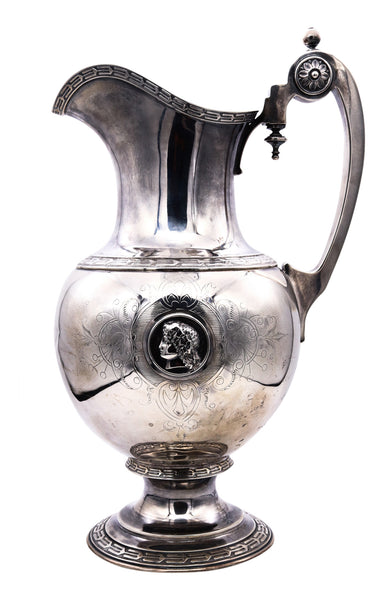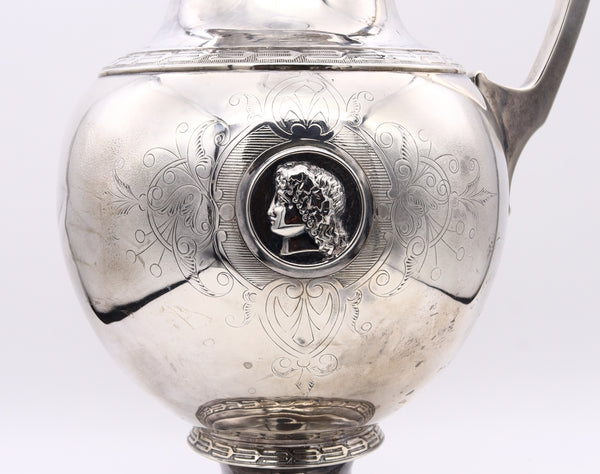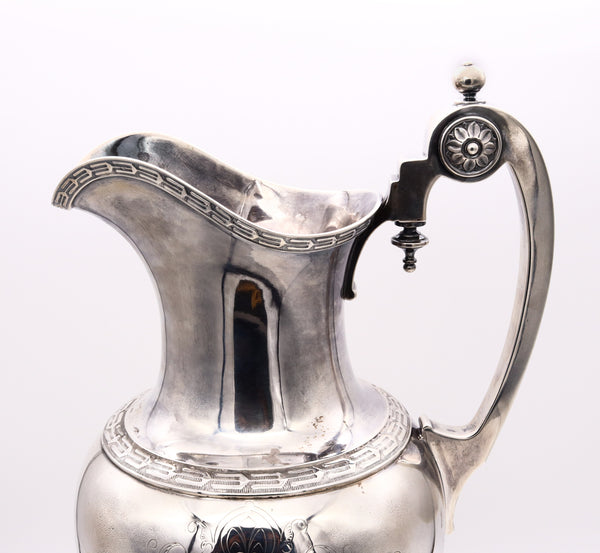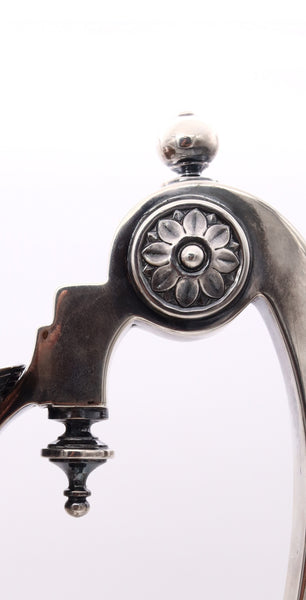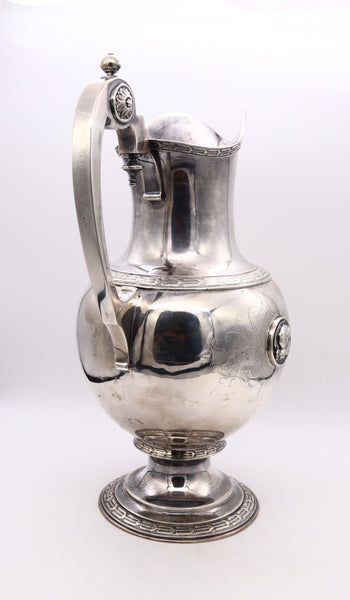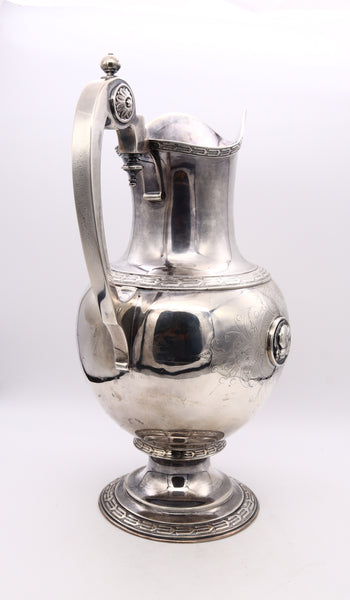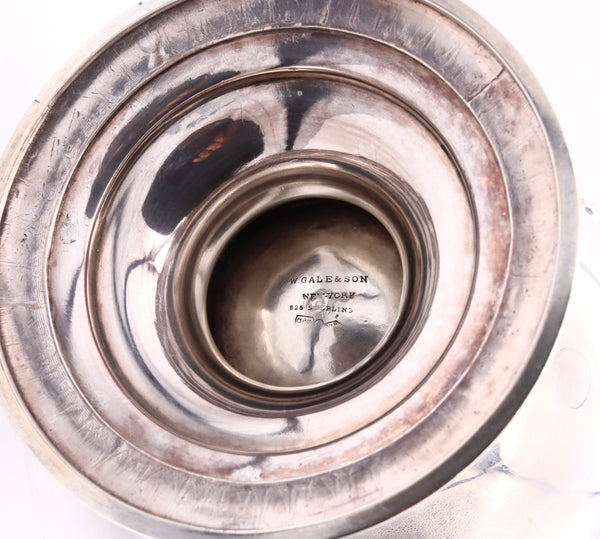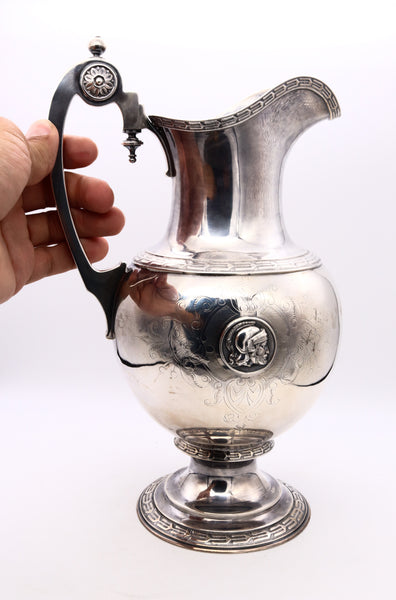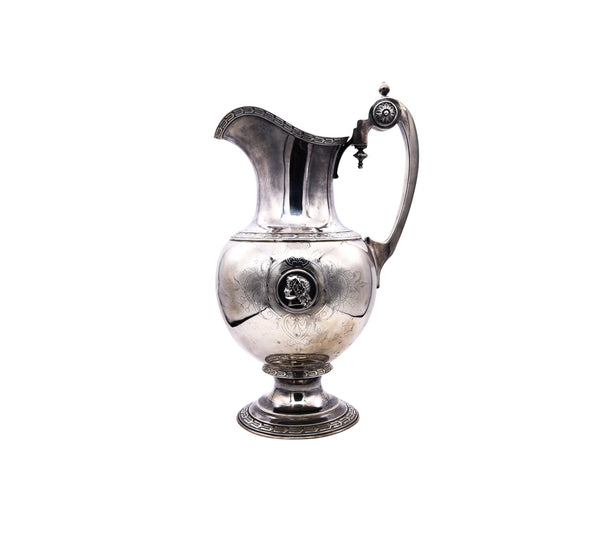William Gale Son 1856 New York Rare Etruscan Medallion Wine Pitcher Ewer In Sterling Silver
Medallion wine ewer designed by William Gale & Son.
Very rare and important piece of the American silversmith history. This fabulous wine ewer was made by the William Gale & Son Company, just five years before the American Civil War (1861-1865) in the 1856. The rich design and the delicate composition reflects the extreme opulence of the northern United States in these period and the degree of sophistication when serving a table.
By other part, this wine ewer is full of symbolisms, where the degree of knowledge and understanding of the characters of Greek and Roman mythology is demonstrated.
This one-of-a-kind piece was carefully crafted with impeccable details in solid .925/.999 sterling silver. It is fully decorated with ancient Etruscan and Greek revival patterns and architectural neo-classic elements, such the small two balusters and the rosettes located in the handle.
The most significant are the two medallions depicting the classical figures of the helmeted & bearded portrait bust of Dionysus and the portrait bust of his daughter Methe, wearing a diadem made of vine leaves.
This rare pitcher has a total weight of 750.43 grams and a measure of 12 by 7.5 inches (30.5 x 19 cm). The base has a diameter of 4.75 inches (12 cm).
Fully stamped in the underneath, with the silver assay hallmarks, the maker's cartouche GS, the year of production 1856 and signed in full, "W. GALE & SON NEW YORK .925 STERLING GS 1856".
Dionysus, (Bacchus for the Romans), was the god of the grape-harvest, winemaking and wine, of fertility, orchards and fruit, vegetation, insanity, ritual madness, religious ecstasy, festivity and theatre in the ancient Greek culture. The iconographic theme on this sheet refer to the legend of the triumph of Dionysus, or as the Romans called him, Bacchus the god of the grape harvest, winemaking and wine, the son of Zeus and Semele. The Bacchanalia was a religious festival in honor of the wine god, Dionysus.
Methe, was the goddess-nymph of drunkenness in the ancient Greek mythology. She was the daughter and companion of the god Dionysus. She was also the wife of Staphylos (bunch of grapes) and mother of Botrys (grapes).
History: The founder of the firm was William Gale (1799-1867) and the company was located in the number 447 at Broome street in New York. W. Gale invented and patented in 1826 a process for making spoons with ornamental patterns by cutting the ornament on rollers, both the upper and the lower rollers being cut with the pattern. this made the production of pattern spoons much less expensive than the former method of hand hammering patterns by the use of dies. William Gale was succeeded in the business by his son William Gale Jr. (1825-1885) who, after few years, ceased the control of the firm to H.B. Dominick & Leroy B. Haff until 1928 when the business was finally purchased by Reed & Barton.
Note: The signature and hallmarks stamped at the bottom of this piece, correspond to the pieces produced before the US civil war, between the 1853 and 1859.

Note: This pattern is very rare and we have only been able to find a reference to a similar one (see upper figure) but, with the portrait of Minerva and with a simple handle with significant differences.
It is in perfect condition with no dents, bumps or marks and is not extremely polished, have the normal traces of wear for a piece of over 165 years old.
INVENTORY REF: D0000MARE/.1111











